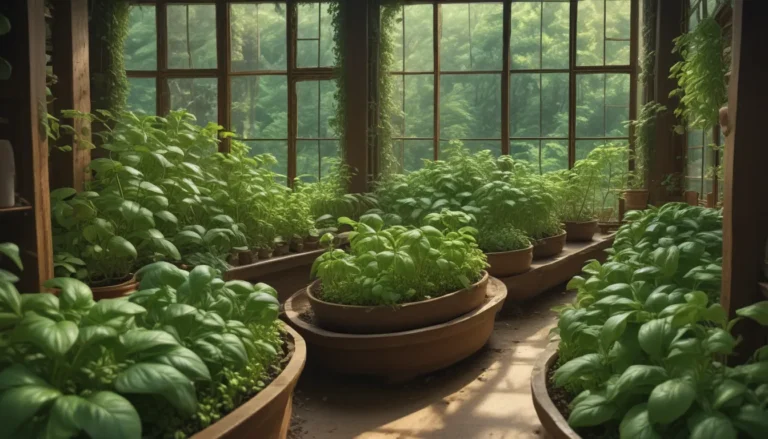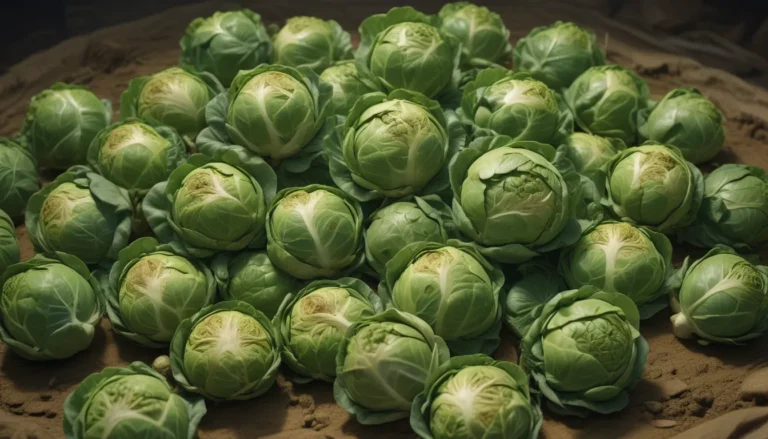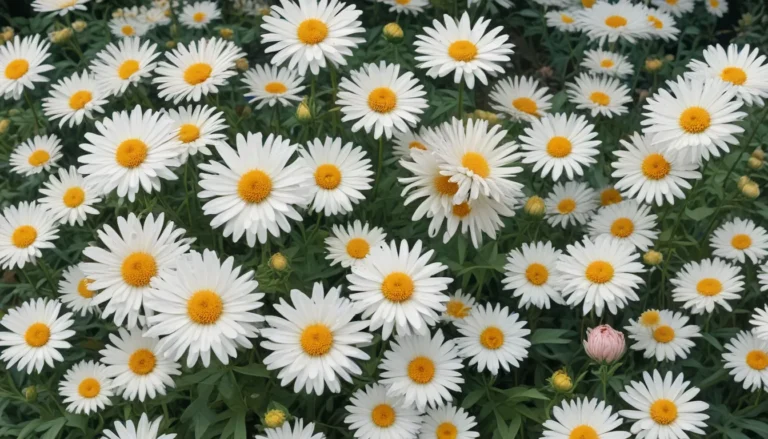A Comprehensive Guide to Planting and Growing Salsify

Are you on the lookout for an underappreciated vegetable to add to your garden? Look no further than salsify! This plant is not only delicious but also resistant to pests and diseases, making it a valuable addition to any garden. In this detailed guide, we will walk you through everything you need to know about growing salsify successfully.
What You’ll Learn
Let’s dive into the world of salsify and discover:
- What Is Salsify?
- Cultivation and History
- Propagation
- How to Grow
- Growing Tips
- Pruning and Maintenance
- Cultivars to Select
- Managing Pests and Disease
- Harvesting
- Preserving
- Recipes and Cooking Ideas
- Quick Reference Growing Guide
Salsify thrives in USDA Hardiness Zones 5 to 9 and requires a long period of cool weather to flourish. With the right conditions, growing salsify can be an easy and rewarding experience.
What Is Salsify?
Salsify, scientifically known as Tragopogon porrifolius, is a plant grown for its edible root. It belongs to the Asteraceae family, closely related to chicory and dandelion. Salsify boasts purple or yellow flowers that not only add an ornamental touch to your garden but also attract pollinators.
The roots of salsify resemble thin white carrots but have a unique flavor profile that is often compared to the ocean or mild oysters. This versatile vegetable can be a delightful addition to your culinary creations.
Cultivation and History
Originating in the Mediterranean, salsify has a rich history dating back to ancient Greek and Roman civilizations. By the 1500s, it had spread throughout Europe, eventually reaching the New World in the 1700s. Although salsify was once a popular vegetable, its popularity dwindled with the advent of refrigeration.
As a biennial plant, salsify is primarily grown as an annual. Its long, strappy leaves and thin root make it a unique addition to any garden.
Salsify Propagation
To grow salsify successfully, you’ll need to start with seeds. Propagating salsify through division, cuttings, or transplanting is not an option. Therefore, seeds are your best bet for cultivating this flavorful root vegetable.
Timing is crucial when planting salsify seeds as it requires up to 150 days of cool temperatures to mature fully. You have the option to start seeds outdoors a few weeks before the last frost date or indoors in compostable pots eight weeks before the frost date.
Ensure the seeds are planted in loose, well-draining soil, either in the ground or in containers, depending on your soil type. Regular watering and adequate sunlight are essential for successful seed germination and plant growth.
How to Grow Salsify Plants
When growing salsify, it’s essential to provide the right conditions for optimal root development. Loose, rich soil is ideal for growing salsify, whether in the ground or in containers. Consistent moisture is key, ensuring the roots receive adequate hydration without becoming waterlogged.
Maintenance of salsify plants involves pruning off any dead leaves to promote healthy growth and prevent disease. Growing salsify successfully hinges on planting when cool weather prevails and maintaining loose soil to facilitate root growth.
Growing Tips
To make growing salsify a breeze, here are some useful tips:
- Plant when there will be about five months of cool weather or start seeds indoors.
- Roots need loose, rich soil. Amend the soil or plant in a container.
- Water when the top inch of soil dries out.
Following these tips will help you achieve a bountiful harvest of salsify roots.
Salsify Cultivars to Select
While there are not many salsify cultivars available, a few stand out for their unique characteristics:
- Fiore Blu: This variety features a beautiful purple-blue flower with a milder-flavored root.
- Mammoth Sandwich Island: Known for its large roots, reaching up to 10 inches in length and an inch in diameter.
- White French: An heirloom variety with slender, pale roots that are full of flavor and reach up to six inches in length.
Each cultivar offers distinct attributes that can enhance your salsify-growing experience.
Managing Pests and Disease
Fortunately, salsify is relatively resistant to pests and diseases. Most issues that arise are minor and rarely affect the overall health of the plants. Here are some common pests and diseases to watch out for:
Insects
- Aphids: While aphids may feed on salsify leaves, they are not a major threat and can be controlled by washing off the leaves with water.
- Carrot Rust Flies: These pests can infest salsify roots, causing damage and potentially rendering the harvest inedible. Beneficial insects and protective netting are effective preventive measures against rust flies.
Disease
- White Rust: Caused by an oomycete, white rust can infect salsify leaves, leading to crusty lumps and collapsed foliage. Regular monitoring and proper plant care can help prevent the spread of white rust.
By staying vigilant and implementing appropriate pest and disease management strategies, you can maintain healthy salsify plants throughout the growing season.
Harvesting Salsify Roots
To harvest salsify roots at their peak, it’s best to do so before the flowers bloom. The roots become tough and bitter once the plant flowers. Similarly, harvesting the leaves before flowering ensures they retain their tenderness and flavor.
When harvesting salsify roots, it’s essential to loosen the soil around the plants and gently lift the roots using a garden fork or knife. Careful handling during the harvest process helps prevent damage to the roots and ensures a successful harvest.
Preserving Salsify Roots
After harvesting, preserve salsify roots by brushing off the dirt and wrapping them in a paper towel. Store the roots in a ventilated plastic bag in the refrigerator crisper drawer for short-term preservation.
Alternatively, store the roots in sand in a root cellar for extended storage. Experiment with different preservation methods such as dehydration or freezing to enjoy salsify roots year-round in various culinary dishes.
Recipes and Cooking Ideas
Salsify roots offer a unique flavor profile that pairs well with a variety of dishes. Try these recipes and cooking ideas to enjoy the versatility of salsify in your kitchen:
- Roasted Salsify Chips: Slice salsify roots and roast them in the oven with oil, garlic, and herbs for a delicious snack.
- Salsify Fries: Cut salsify roots into sticks and bake them for a healthier alternative to traditional fries.
- Salsify Salad: Shred salsify roots and toss them in a vinaigrette with other vegetables for a refreshing salad.
- Creamy Salsify Soup: Swap parsnips for salsify in a creamy soup recipe for a unique flavor experience.
Experiment with different cooking methods to find your favorite way to enjoy salsify roots in culinary creations.
Quick Reference Growing Guide
For quick reference, here are key details about salsify to help you grow this unique root vegetable successfully:
- Plant Type: Biennial root vegetable
- Native to: Mediterranean
- Hardiness (USDA Zones): 5-9
- Bloom Time/Season: Spring-fall
- Exposure: Full sun
- Time to Maturity: 150 days
- Spacing: 9 inches
- Planting Depth: 1 inch (seeds)
- Height: 4 feet
- Spread: 18 inches
- Growth Rate: Moderate
- Common Pests and Diseases: Aphids, carrot rust flies; white rust
Use this guide as a reference to grow salsify successfully and enjoy a bountiful harvest of flavorful roots.
Say Yes to Salsify
Salsify is a versatile and underappreciated root vegetable that deserves a spot in your garden. Whether you’re a seasoned gardener or new to growing vegetables, salsify offers a unique and rewarding growing experience. Explore different culinary uses for salsify roots and share your cooking tips in the comments below.
If you’re looking to expand your root vegetable garden, consider adding other options like celery root, daikon, or Jerusalem artichokes for a diverse range of flavors and textures.
Root vegetables are a delightful addition to any garden, offering both culinary versatility and aesthetic appeal. Diversify your garden with salsify and other root vegetables to create a vibrant and flavorful growing space.
Thank you for reading! I hope you found this comprehensive guide to planting and growing salsify informative and inspiring. Embrace the unique flavors and textures of salsify roots in your culinary creations and gardening adventures. Happy gardening!





